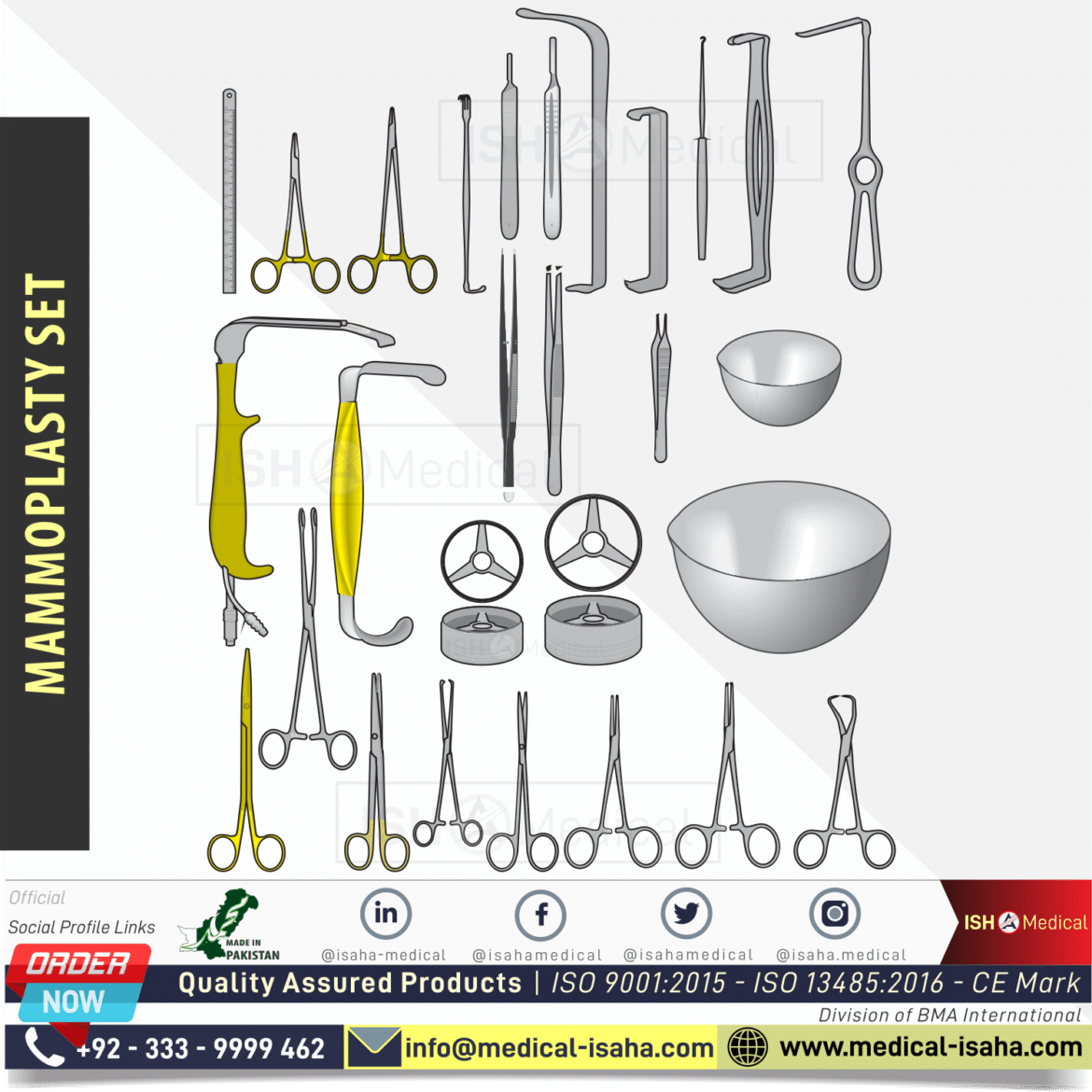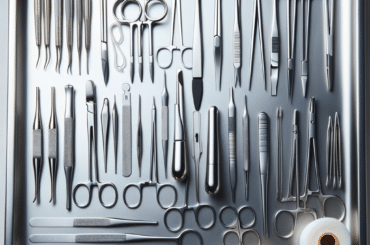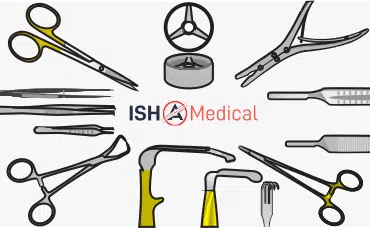Breast surgery encompasses a range of procedures aimed at altering the shape, size, or appearance of the breasts. Performed by skilled plastic surgeons, these surgeries can include breast augmentation, reduction, reconstruction, and lifts. Each procedure requires unique, specialized tools and instruments to ensure patient precision, safety, and the best possible patient outcomes.
What is Breast Surgery?
Breast surgery is a form of plastic surgery that focuses on modifying the breasts. Further, it can be cosmetic, to enhance or alter the appearance, or reconstructive, to restore the breast’s shape and size after mastectomy or injury. Also, the success of these surgeries largely depends on the plastic surgeon’s expertise and the surgical instruments’ quality.
Essential Instruments for Breast Surgery: A Plastic Surgeon’s
Breast surgery, a technical branch of plastic surgery, involves various procedures aimed at reshaping, resizing, or reconstructing the breasts. For plastic surgeons, having the correct set of instruments is crucial to ensure precision, safety, and optimal outcomes. Also, this guide delves into the essential tools and instruments indispensable during breast surgery.
- Breast surgery requires a range of specific tools to ensure accuracy and care. So, the following are the common types of breast surgery tools:
-
Breast Retractors:
- Here’s a detailed overview of each breast retractor, focusing on its specific features and uses in breast surgery.
-
Sculpo Breast Retractor
- Design: The Sculpo Breast Retractor is designed with a unique curved shape. It also conforms to the natural contours of the breast.
- Usage: It’s primarily used in breast augmentation and reconstruction surgeries.
- Features: This retractor often features a light source attachment, providing better surgical visibility.
-
Ferriera Style Breast Surgery Retractor
- Design: Known for its versatility, the Ferriera Style Retractor has an adjustable blade that can be adapted to various surgical needs.
- Usage: It’s widely used in breast augmentation, reduction, and mastopexy (breast lift) surgeries.
- Features: The retractor is equipped with a serrated edge, which provides a firm grip on the tissue, minimizing slippage. Also some models also include a fiber optic light source for enhanced visibility.
-
Tebbetts Breast Retractors
- Design: Tebbetts retractors are designed with slim, flat blades. Also, it is ideal for precise and delicate breast surgeries.
- Usage: They are handy in procedures that require fine dissection or careful manipulation of breast tissue.
- Features: These retractors often come with a smooth or slightly serrated edge and may include a ruler etched onto the blade for accurate measurement during surgery.
-
Marx Retractors
- Design: The Marx Retractor is characterized by its broad, slightly curved blade.
- Usage: It’s commonly used in breast reconstruction and augmentation surgeries, providing excellent exposure to the surgical site.
- Features: The wide blade distributes pressure more evenly, reducing the risk of tissue damage. Some models are equipped with a fiber optic light channel for improved visibility in the operative field.
Conclusion
Each breast retractor offers unique features and designs, catering to different aspects of breast surgery. So, the choice of retractor depends on the specific requirements of the surgical procedure and the surgeon’s preference. Also, high-quality instruments like these play a crucial role in the success of cosmetic breast surgeries, ensuring precision, safety, and optimal outcomes for patients.
-
Breast Areolar Markers:
- Standard breast marker tools, which are essential in cosmetic breast surgery for ensuring symmetry and precision, are used in breast surgery:
-
Grossmann Areolar Marker
- Design: The Grossmann Areolar Marker is known for its precise and adjustable circular design.
- Usage: It’s primarily used to outline the areola in breast surgeries such as breast reductions, lifts, or augmentations.
- Features: This marker allows surgeons to measure and mark the desired diameter of the areola accurately. Further, it typically comes in various sizes to accommodate different patient needs and preferences. Also, the marker is designed to be easy to handle, ensuring clean and clear marking on the skin.
-
Solz Areolar Marker
- Design: The Solz Areolar Marker stands out for its simplicity and effectiveness in marking the areolar border.
- Usage: Like the Grossmann, it’s used in procedures where the areola’s size and positioning are critical, such as mastopexy or augmentation mammoplasty.
- Features: This marker often features a range of size options, allowing for customization according to the patient’s anatomy and the desired outcome of the surgery.
-
Freeman Areolar Marker
- Design: The Freeman Areolar Marker is renowned for its precision and ease of use.
- Usage: It’s widely used in cosmetic breast surgeries to demarcate the areola accurately.
- Features: The marker typically comes with a firm grip and various size options, ranging from small to large diameters. It’s designed to leave a clear, non-permanent mark on the skin, which guides the surgeon during the procedure.
General Considerations
- Material: These markers are usually made from medical-grade materials that are safe for skin contact and easily sterilized.
- Sterilization: They are autoclavable, ensuring they can be safely reused in sterile surgical environments.
- Ease of Use: Designed for precision and ease, these markers are user-friendly, allowing for quick and accurate marking.
Conclusion
Breast areolar markers like Grossmann, Solz, and Freeman are crucial in achieving aesthetic symmetry and proportion in breast surgeries. Further, their ability to provide clear and accurate markings ensures that surgeons can perform procedures with greater confidence and precision, improving patient outcomes. Also, the choice of a specific marker often depends on the surgeon’s preference and the particular requirements of the surgery.
-
Breast Dissectors
- Here’s a detailed overview of the different types of breast dissectors, explicitly focusing on the oval spatulated, blunt tip, and Dingman Hook dissectors. In the same way, these tools are crucial in breast surgery, aiding in the delicate process of tissue dissection and manipulation:
-
Oval Spatulated Breast Dissectors
- Design: Oval spatulated breast dissectors feature a broad, flat, and slightly curved blade with an oval shape.
- Usage: They are primarily used in breast augmentation and reconstruction surgeries for creating pockets in the breast tissue.
- Features: The spatulated design allows for gentle and precise dissection with minimal trauma to the tissue. Also, the broad surface of the blade is ideal for evenly spreading the tissue, providing better control and visibility during surgery.
-
Blunt Tip Breast Dissectors
- Design: These dissectors have a rounded, blunt tip, making them ideal for separating tissues without cutting or damaging them.
- Usage: Blunt tip dissectors are used in various breast surgeries, particularly where delicate tissue handling is required, such as in breast lifts or reductions.
- Features: The blunt tip reduces the risk of accidental puncture or injury to the breast tissue and underlying structures. Also, they are often used for tunneling and creating spaces within the breast tissue with minimal risk.
-
Dingman Hook Dissectors
- Design: Dingman Hook dissectors are distinguished by their unique hooked tip.
- Usage: They are instrumental in procedures that require precise manipulation and retraction of breast tissue, such as in breast reconstruction.
- Features: The hook tip provides excellent grip and control, allowing the surgeon to handle and move tissue delicately and precisely. This design is particularly beneficial for targeting specific areas of tissue with accuracy.
-
General Considerations
- Material: These dissectors are typically made from high-quality stainless steel, ensuring durability and longevity.
- Ergonomics: The handles are designed for comfort and ease of use, reducing surgeon fatigue during lengthy procedures.
Conclusion
Breast dissectors like the oval spatulated, blunt tip, and Dingman Hook varieties are indispensable tools in breast surgery.
-
Breast Elevators
- Breast elevators are used to lift and manipulate breast tissue during surgical procedures. They come in different types to suit various surgical needs:
- Standard Breast Elevators: These are used for general lifting and positioning breast tissue. Also, they typically have a flat, slightly curved blade that gently elevates the tissue without causing damage.
- Specialized Breast Elevators: Some elevators are designed for specific procedures. For example, elevators with a more pronounced curve or a narrower tip in breast reconstruction might be used to create or adjust pockets within the breast tissue.
- Adjustable Breast Elevators: These tools have adjustable blades that can be adapted to the specific contours and depth required in the surgery. Also, they offer greater flexibility and precision.
General Considerations
- Material: Breast elevators are usually made from medical-grade stainless steel.
- Ergonomics: The design of these tools often focuses on ergonomic handling to provide comfort and precision during surgery
Conclusion
Breast elevators are essential in breast surgery. Also, the variety in their types allows surgeons to choose the most appropriate tool for each specific procedure.
-
Solz Scissors:
Solz Breast Scissors are used in various breast surgery procedures. In the same way, they are designed to provide precision and ease of use in cutting and shaping breast tissue. Also, here’s a detailed look at Solz Breast Scissors and their types:
-
Solz Breast Scissors
- Design: Solz Breast Scissors are distinguished by their sharp, precise blades and design. They are specifically tailored for use in breast surgery, offering the accuracy needed for delicate tissue work.
- Usage: These are used for cutting through breast tissue, making incisions, and shaping during procedures like breast augmentation, reduction, and mastopexy (breast lift).
-
Straight Solz Breast Scissors
- Features: These have straight blades and are used for making precise straight cuts.
- Applications: Ideal for incisions where straight lines are required, such as in initial incisions for breast augmentation.
Curved Solz Breast Scissors: - Features: These curved blades permit more controlled cutting around the breast shapes.
Applications: They are particularly useful in shaping during breast reduction or lift surgeries. -
Micro Solz Breast Scissors
-
Blunt-Tip Solz Breast Scissors:
General Considerations
- Material: Solz Breast Scissors are typically made from steel.
- Ergonomics: The handles are designed for comfort and ease of use, reducing surgeon fatigue during lengthy procedures.
Conclusion
Solz Breast Scissors are essential in breast surgery, offering surgeons the accuracy and control needed for successful outcomes. Also, the variety in their types allows for use in different aspects of breast surgery, verifying that the right tool is available for each specific procedure.


